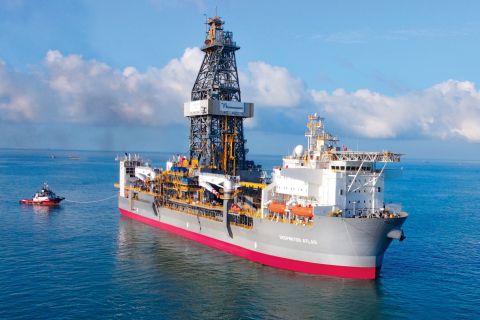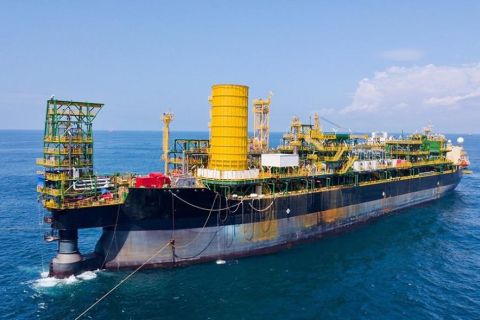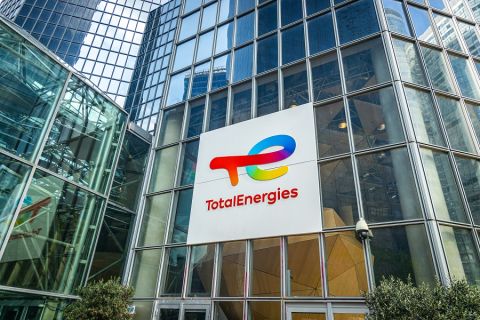Few organizations have a better view of the midstream’s current activity than the Interstate Natural Gas Association of America (INGAA)—the trade group that represents the major natural gas pipelines in the U.S. and Canada on regulatory and legislative issues. The gas transmission business has seen extensive change in the past two decades and its chief executive has been there for it. He predicts more change in the future.
MIDSTREAM Guiding INGAA requires hybrid knowledge of both the energy business and government. What prepared you for your current role?
SANTA I’ve been very fortunate to have had some career opportunities that positioned me well for this job. In the late ’80s and early ’90s, I had the opportunity to be a lawyer on the staff of the Senate Energy Committee. When I was there, the committee had the lead on the Natural Gas Wellhead Decontrol Act of 1989 and the Energy Policy Act of 1992. Those were wonderful opportunities to get a great education and also play a small role in fashioning some of the laws that affect the industry.
That led to a truly great opportunity in 1993 to be a member of the Federal Energy Regulatory Commission (FERC) for a little more than four years. While our group of commissioners did not issue Order 636, the big gas restructuring rule, we acted on most of the individual pipeline proceedings implementing the order. At that point in time the beginnings of electric restructuring were occurring, and I gained a good education on electricity there, which of course is valuable now.
I guess there were two other things. After my term on the commission, I moved to Louisville, Kentucky, and was with LG&E Energy Corp., which is a holding company that owns Louisville Gas & Electric and Kentucky Utilities. I think the chance to be an officer in an investor-owned energy company gave me a pretty good, outside-the-Beltway, view of energy regulation and policy. Then, going back to the beginning, I was at the Van Ness Feldman law firm in Washington, D.C., where I had some very good teachers.
MIDSTREAM The shale plays are restructuring the pipelines’ flow from producer to consumer. What does the industry need to do to respond to this change?
SANTA It is understandable that there’s something of a lag between gas supply development and the pipelines needed to transport that gas to consumers. Remember when you’re talking about new pipeline capacity, you’re talking about a large capital investment in a long-lived asset. This is not a build-it-and-they-will-come industry. This is an industry where you build it when shippers are willing to step up and sign firm contracts for some duration to support financing a project.
The other thing that has happened with the shift in the sources of gas and the shift in the flows, is there has been a lot done in repurposing pipelines, whether it’s redirecting the flow of a natural gas pipeline or, in some instances, conversions to transport either natural gas liquids or crude oil.
The tremendous success of natural gas has really upset the apple cart. Pretty much any fuel or technology that competes with gas, whether you’re talking on the conventional end—nuclear and coal—or on the other end—renewable and efficiency—has been upset. I think a lot of the environmental activism that we’re seeing directed at natural gas and at gas infrastructure—while there are legitimate environmental issues to be dealt with—is spurred by the recognition that the success of natural gas has undermined the pace of the transition to the alternatives preferred by such activists. Consequently, they are trying to throw a monkey wrench into natural gas development to slow it down. We’ve got to realize that we are dealing in some cases with stakeholders whose agendas are not just mitigation of the environmental or resource issues raised by the pipeline, but a desire to stop the development of natural gas.
MIDSTREAM Where do things stand with reform to the pipeline permitting process?
SANTA The fact that we have been successful at building pipelines demonstrates that we do, in fact, have a pretty good legal and regulatory framework in the U.S. Between 2003 and 2013 there were 12,400 miles of new interstate pipeline added. Clearly, something is working.
By the same token, I think there are some opportunities for incremental improvements. The INGAA Foundation released a study that looked at provisions in the Energy Policy Act of 2005 that were intended to provide some ability to expedite the various federal permits needed, in addition to a FERC certificate. Unfortunately, according to the study, since 2005, delays by other agencies have become greater rather than shorter. There’s a piece of legislation by Rep. Mike Pompeo (R-Kansas), H.R. 1900, that would make deadlines for the other agencies enforceable. That bill has passed the House of Representatives. There is not yet companion legislation in the Senate.
There are two other bills that affect pipeline permitting. One deals with a relatively small issue having to do with pipelines in federal park land. The current statute that authorized permitting of infrastructure in federal parks was enacted back in the early 1900s. There were no natural gas pipelines then. What that means is that to build a pipe across federal park land—or even to modify pipe that’s already there—you need a specific act of Congress.
Finally, legislation was introduced to provide greater clarity on authorization of natural gas pipes, oil pipes and electric transmission lines that would import or export energy to or from the U.S., Canada or Mexico. While this does not directly affect the pending Keystone XL Pipeline, I think that proceeding has cast a light on the fact that that the process can become—and this is an understatement— very politicized, and that it’s a somewhat opaque process.
MIDSTREAM The relationships between the U.S. and its neighbors are changing rapidly. How will this impact North America’s gas business in the future?
SANTA On Mexico, it’s rather interesting that while liquefied natural gas (LNG) exports and the issues surrounding them have received so much attention, a story that hasn’t had that much attention is Mexico’s growing demand for U.S. gas. That is creating the need for new infrastructure. As we look at exports becoming a bigger and bigger slice of the demand pie, it’s important to recognize that Mexico is going to be a significant part of that.
Canada is interesting because it was the major source of gas imports into the U.S. At one point in time, Canadian imports may have been 16% or 18% of U.S. supply. The combination of the U.S. shale revolution and diminishing conventional production in western Canada has changed that. Imports of gas from Canada have gone down and the utilization of the pipes built to move that gas has changed. In some ways, many of the same issues that are shaping the U.S. pipeline environment are present in Canada. For example, TransCanada is planning conversion of part of its mainline gas system to crude oil to support its proposal to take Canadian oil east.
The other thing—and maybe even more so than in the U.S.—is that interest in exporting LNG is driving the need for pipeline capacity. You see this in connection with the LNG export terminal proposals in British Columbia—the need for new pipe to bring supply to those facilities.
MIDSTREAM U.S. LNG exports are expected to begin within two years. How will the gas industry change as the nation becomes an LNG exporter?
SANTA There has been apprehension voiced about LNG exports from some industrial users and municipal gas utilities. Still, if you look at the tremendous elasticity of supply that has been demonstrated with shale gas, most studies point to only a moderate price impact and benefits to the U.S. economy from these exports. So, I think that LNG exports will be a net benefit for the U.S. In terms of the pipeline industry, my impression is that U.S. exports probably will not create a significant demand for new U.S. pipeline infrastructure because a lot of the terminals that have applied for export authorization are existing import terminals that will add liquefaction and become export terminals. In other words, these are terminals that already are connected with the natural gas pipeline network. The impact on pipelines will be more in terms of affecting gas flows as opposed to creating the need for significant new infrastructure.
MIDSTREAM INGAA has made pipeline safety a central issue. What has changed, and what needs to change, to improve pipeline integrity management?
SANTA You’re right, it has been a major emphasis for us. I think that the San Bruno tragedy in 2010 was a major wakeup call. The INGAA board was very responsive because there was a recognition that, apart from complying with the law, safety and the public’s confidence in the safety of pipelines is really an important part of our social license to do business. And because of that, the board created a task force, established a goal of zero incidents and embarked upon a multistep set of pipeline safety commitments in advance of new regulations. The view was we have to get on the road to continuously improving pipeline safety, to move toward that goal of zero, no matter what the law says.
That has prepared us very well for whatever is to come in new regulations that the Pipeline and Hazardous Materials Safety Administration will propose, probably next summer.
MIDSTREAM Please take a moment and discuss the rapid growth in gas demand for power generation.
SANTA A major issue for INGAA is the gas-electric interface and the fact that power generation is the largest source of new U.S. gas demand. Some power markets have fully restructured themselves and you’ve got the question—once the integrated utilities have been broken apart—who has the incentive and the economic wherewithal to sign up for pipeline capacity? New England is very reliant on gas-fired generation and yet it now has a market structure that creates little or no incentive for generators to sign up for pipeline capacity.
Compare New England and Florida. Is there anything alike about them? If you think about it from a natural gas perspective, both regions are heavily dependent on gas for electric-power generation. Both of them lack indigenous gas supply and indigenous gas storage. Both are quite literally at the end of the pipeline.
Yet Florida made the commitment for a major new interstate pipeline. And part of the reason they’ve made that commitment is because the utilities there have the ability to sign up for, and pay for, that capacity, and it’s supported by the state’s regulatory structure. In New England, that’s not happening.
I think that it is important for us to try to affect the gas/electric debate because electricity generation is a big growth market for natural gas and for pipelines. In addition, quite frankly, we want to make sure that there is recognition that the gas market—both in terms of the commodity market and pipeline transportation—works very well.
This is not intended as a commentary on restructuring versus not restructuring electric markets. It’s just the fact that in some cases the restructured markets do not provide anyone with the incentive to hold the pipeline capacity necessary to serve the power generators. The natural gas pipeline industry has a demonstrated ability to build, if somebody is willing to make the commitment.
Recommended Reading
Rystad: More Deepwater Wells to be Drilled in 2024
2024-02-29 - Upstream majors dive into deeper and frontier waters while exploration budgets for 2024 remain flat.
Deepwater Roundup 2024: Offshore Africa
2024-04-02 - Offshore Africa, new projects are progressing, with a number of high-reserve offshore developments being planned in countries not typically known for deepwater activity, such as Phase 2 of the Baleine project on the Ivory Coast.
Eni Finds 2nd Largest Discovery Offshore Côte d’Ivoire
2024-03-08 - Deepwater Calao Field’s potential resources are estimated at between 1 Bboe and 1.5 Bboe.
Cronos Appraisal Confirms Discovery Offshore Cyprus
2024-02-15 - Eni-operated block partner TotalEnergies says appraisal confirms the presence of significant resources and production potential in the block.
Deepwater Roundup 2024: Offshore Australasia, Surrounding Areas
2024-04-09 - Projects in Australia and Asia are progressing in part two of Hart Energy's 2024 Deepwater Roundup. Deepwater projects in Vietnam and Australia look to yield high reserves, while a project offshore Malaysia looks to will be developed by an solar panel powered FPSO.





